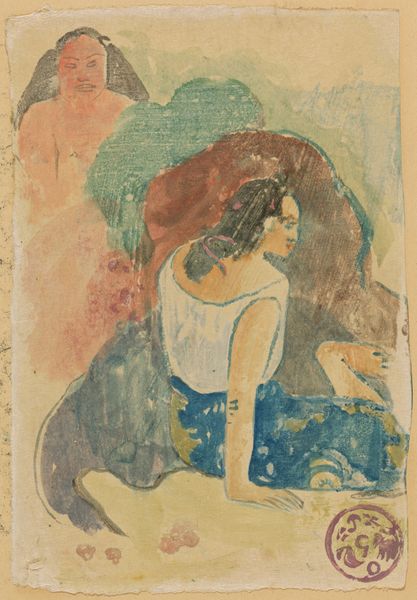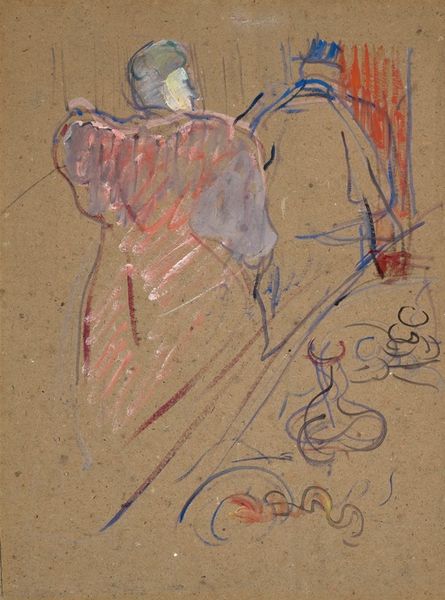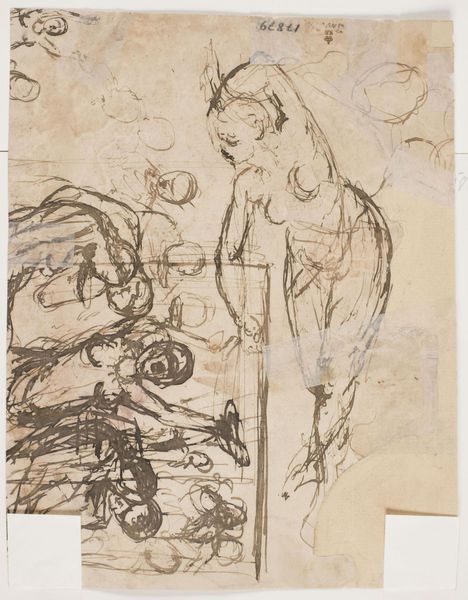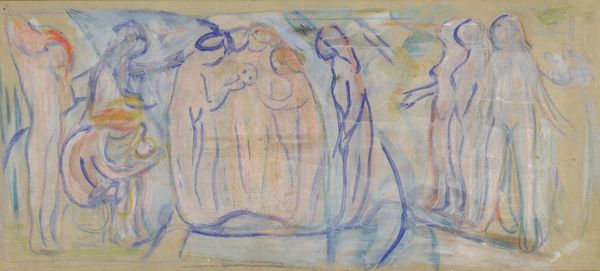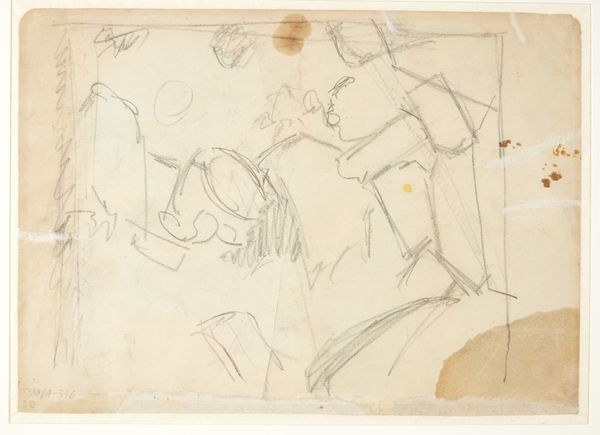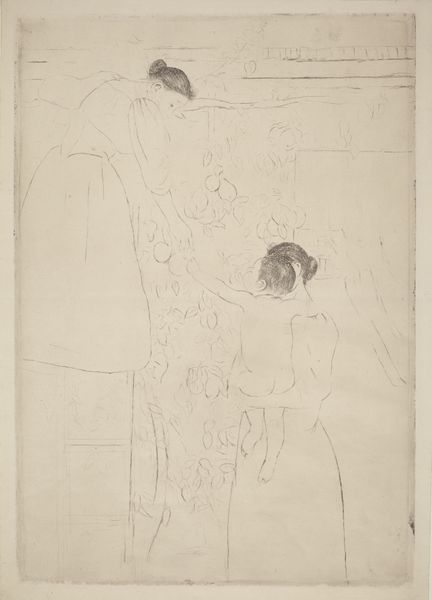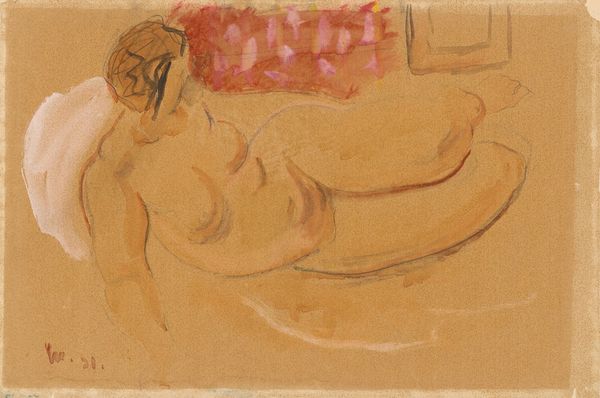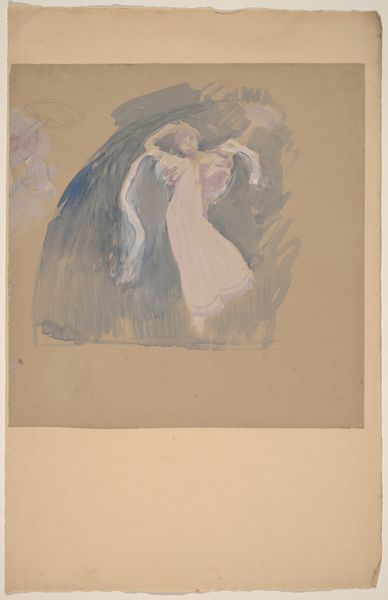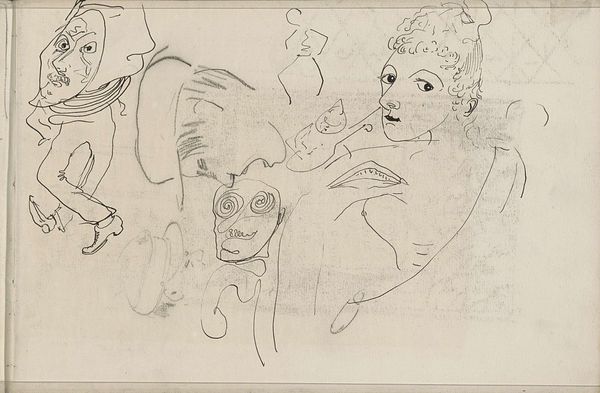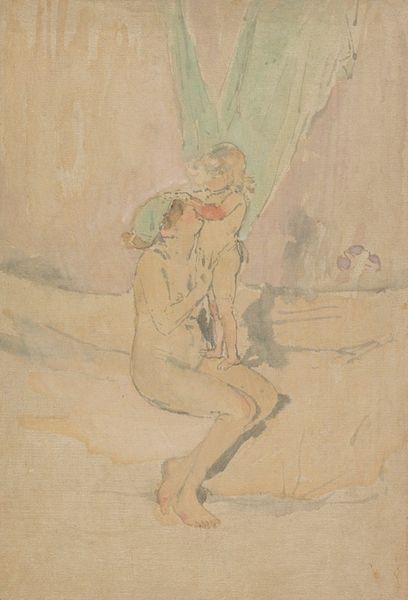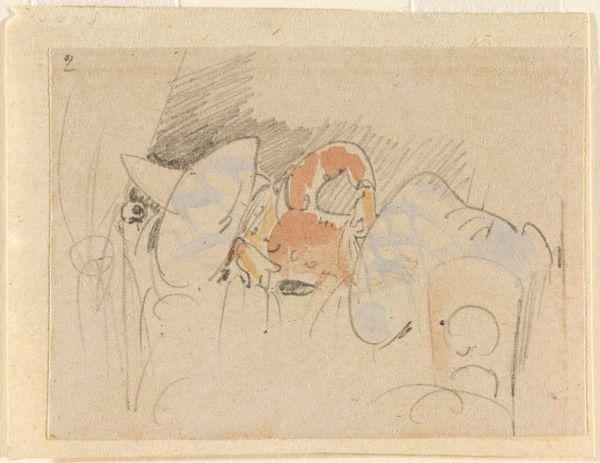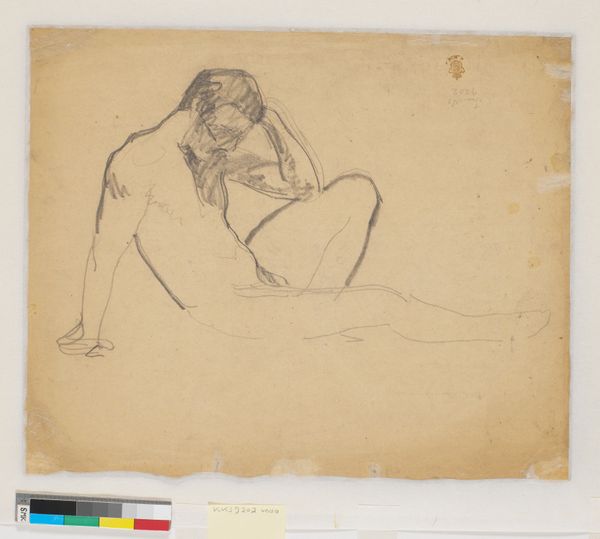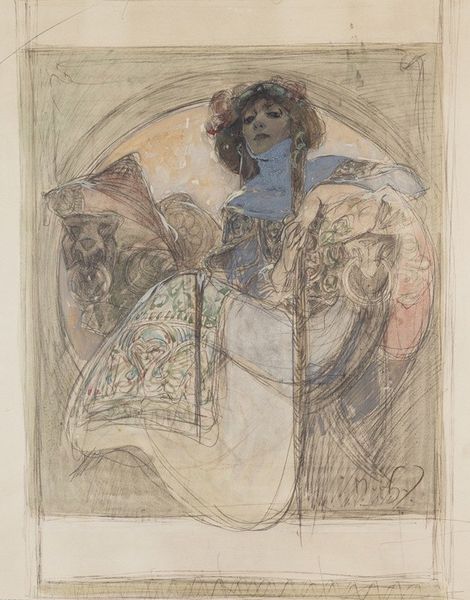
drawing
#
drawing
#
amateur sketch
#
toned paper
#
light pencil work
#
incomplete sketchy
#
possibly oil pastel
#
underpainting
#
pastel chalk drawing
#
watercolour bleed
#
watercolour illustration
#
watercolor
Copyright: Public Domain: Artvee
Editor: So, this is Toulouse-Lautrec's "Madame Thadée Natanson" from 1895, done with, it looks like, chalk and watercolor. It feels so immediate, like a snapshot. What grabs me is how unfinished it seems; almost like we caught him in the middle of a thought. How do you interpret this work, particularly considering the context of its creation? Curator: That immediacy is key, I think. Lautrec was deeply embedded in the Parisian avant-garde and interested in capturing modern life. It's crucial to see this drawing as a document of its time. Look at Madame Natanson: her dress, hairstyle, and overall presentation reflect the fashion and social aspirations of the upper middle class at that moment. Does the visible "underpainting" or lack of finish suggest anything about the artist/s intent? Editor: Hmm, that makes sense. Maybe the incompleteness is intentional, highlighting the fleeting nature of modern life, the 'snapshot' moment I mentioned? Like he’s showing us a behind-the-scenes glimpse? Curator: Exactly! Lautrec challenges academic traditions of finished portraiture, instead engaging with new conceptions of representation, such as impressionism. Consider how his posters captured popular imagination and fueled social change during this period. And doesn't it almost mock traditional ideals of 'beauty?' Editor: That's a good point. I hadn't thought about the possible political commentary there. Now that I’m looking closer, that figure on the right - could they be staging the theatrical performance witnessed by Madam Natanson? Or, if not, could that simply be how it 'felt' to attend such an affair? Curator: It might suggest his interest in what was happening behind the scenes. And that sense of theater speaks volumes. This drawing offers a unique view into Parisian life. By revealing more to his patron through his perceived imperfections? What could a socialite patron like Madame Natanson make of all this in 1895, do you think? Editor: Wow, it definitely shifts my understanding. It is way more than just a portrait. Seeing how it fits into the wider cultural landscape gives it so much more meaning. Thanks for pointing that out! Curator: Absolutely. It is those backgrounded perspectives that provide insight for the artist as well as subject to us, allowing broader recognition for what otherwise seems hidden, or worse...ignored.
Comments
No comments
Be the first to comment and join the conversation on the ultimate creative platform.
